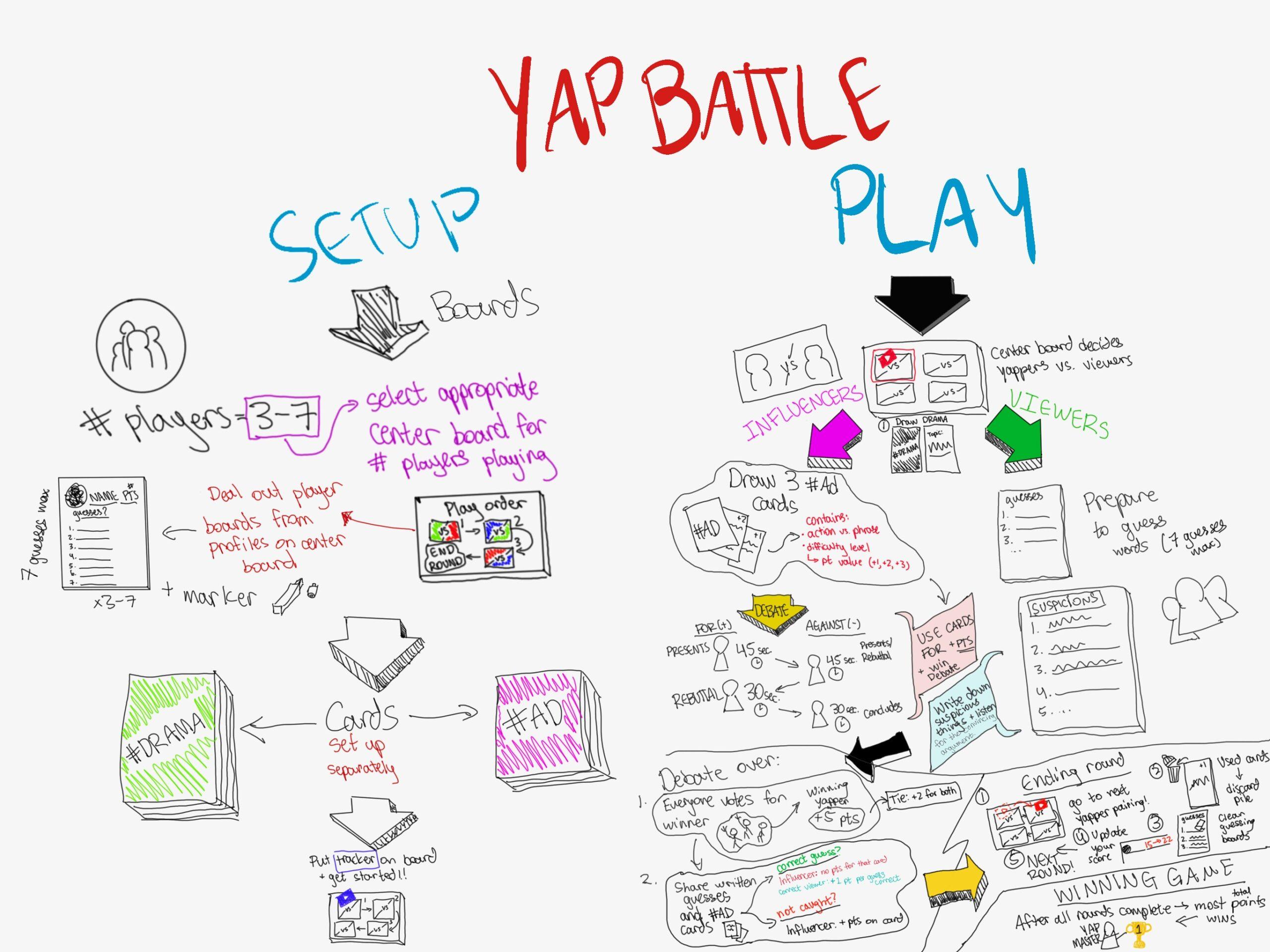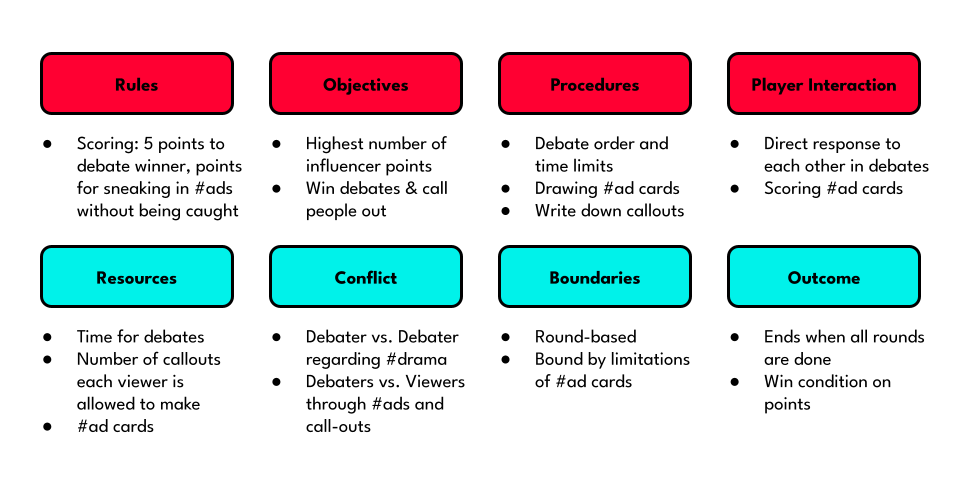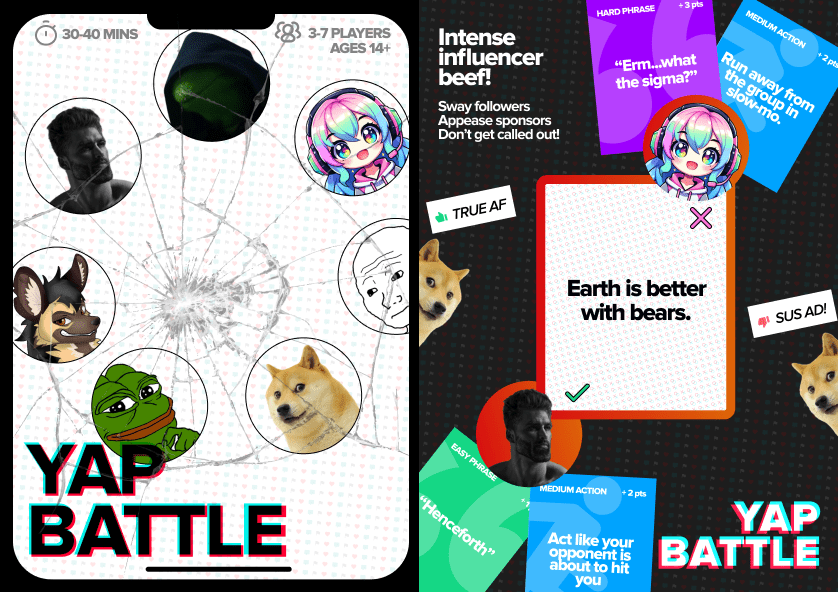created by Team 2: Nils Forstall, Ngoc Tran, Atman Jahagirdar, and Casey Nguyen
✧₊∘ Artist’s Statement ∘₊✧
Some of us love to argue for the art of argument itself. We are misinterpreted as expressing anger, or striving to show dominance even though our true goal is to practice the sacred human ritual of discussion and deliberation. Despite our purest of intentions, we have to accept that it is not always the right time and place to stir up delicious controversy. How ought we relieve this burning desire to live up to our fullest potential? What are we to do?
Others of us love to deceive; we’re addicted to the unparalleled rush of seeing a friend’s reality crumble when they learn the world they thought was real was meticulously constructed by us, the gaslighters. Constructing their reality and tearing it down is how we play God–what could be better? And yet, this thing that brings us so much joy is frowned upon, and “fucked up.” What are we to do?
Even more of us love to yap. The sounds of our own voices are the most beautiful in the world. Premeditated, refined, and developed thoughts are all well and good, but our genius needs no filtering. And yet, time and time again, we’re asked “what are you on?” or told “please just shut up.” What are we to do?
I’ll tell you what we do. We–Nils Forstall, Ngoc Tran, Atman Jahagirdar, and Casey Nguyen–join voices and shout ENOUGH! And we design the perfect board game: Yap Battle; the definitive outlet for arguers, deceivers, and yappers alike. At last, arguers have an ideal setting to delight in deliberation, deceivers have the thrilling yet harmless challenge of saying phrases and doing actions without getting caught, and yappers have delicious, uninterrupted 45 seconds at a time to spew unprepared, unfiltered genius. Through short term rivalry, we create long term connections, strengthen friendships, and maybe, just maybe, weave the tapestry of togetherness.
✧₊∘ Concept Map of the Game System ∘₊✧

✧₊∘ Ideation Exploration ∘₊✧
The idea for “Yap Battle” was drafted from sketches where debates and humor intersect, driven by a vision to blend playful banter and strategy. Drawing inspiration from games like “Superfight” and “Word Sneak,” we wanted to create a space for players to engage in light-hearted debates, injecting unexpected sponsored content into their argument skillfully. Our initial ideation process helped us establish a focus for what we wanted our game to achieve: challenge, fellowship, fantasy, sensation, and most importantly, expression.

Throughout our brainstorming, we focused on how challenge, expression, and fellowship can help foster social interaction between players. Our early card concepts, ranging from thought-provoking topics to silly actions and phrases, were designed to encourage creative argumentation and lively group dynamics.

Along the way, we developed a theme to make the game more cohesive and give it more of a story. We thought about theming around a debate club in school, politicians in an election, or a reality show where the viewers at home could have a say in what the arguers were forced to do. Ultimately, we settled on having the story center around influencers arguing in order to build their following in order to make money from sponsorships. We found that this concept did a good job of integrating the challenges with the debates. It’s also a unique theming that sets this game apart from others that are similar, such as Debatable. Finally, it was more accessible to our primary audience, generation Z, playing on tropes that we are already familiar with. As we introduced the theming in further iterations of the game, player engagement increased substantially, and they loved poking fun at social media.
✧₊∘ Initial Decisions on Formal Elements and Values ∘₊✧
Our Game’s Formal Elements
In the initial phase of our game design, our core objective was to create a game that encouraged vibrant social interaction and strategic gameplay through primarily fellowship, challenge, and expression types of fun. We focused on establishing the following formal elements to structure our game and achieve these effects.

Our Game’s Values
| Values | Description |
| Creativity | Players are rewarded for using creativity to seamlessly weave sponsored content into their debates, promoting imaginative thinking and expressive play. They are also rewarded for creatively arguing for their side to win the debates. |
| Critical Thinking | Viewers must use observation and analysis to detect subtle cues that suggest an influencer is promoting a sponsorship. |
| Social Engagement | The game values active participation and engagement from all players, emphasizing the importance of social dynamics in gameplay. |
| Strategic Play | Success in “Yap Battle” requires careful strategy, both in presenting arguments and in managing the risk-reward balance of using sponsorship deals. |
| Inclusivity | The game is designed to be accessible and enjoyable for a diverse audience, with rules and mechanics that are easy to understand and engage with. |
These initial decisions set the stage for the iterative design process, with playtesting and feedback contributing to the refinement of these elements and values.
✧₊∘ Testing and Iteration History ∘₊✧
Playtest 1 – April 16
Participants: The first playtest consisted of 4 classmates who were unfamiliar with each other and the testers. They had a range of gaming experience and did not seem familiar with games similar to Yap Battle.
Findings:
| Positive | Needs Improvement |
| Players enjoyed being creative while debating | Players who were supposed to be writing down callouts on notes on their phones were not clear on what they were supposed to be doing and did not seem very engaged. |
| Players got more comfortable with each other as the game went along | Debaters did not use the full 45 seconds, and ending early left awkward silences which slowed the momentum of the game. |
| Players thought the game concept was fun. | The way we decided who should debate–asking people to volunteer–was clunky and took too much time. |
Subsequent Iterations:
- Instead of asking players to write guesses on their phone, we created erasable player boards with lines for writing down suspicions. These boards also had a unique letter on each of them.
- We created a center board which uses the unique letter on each player board to assign the debates, ensuring equal opportunity for all players.
- We adjusted the types of argument prompts allowing for more variety and creativity.
- We rephrased all debate cards as statements that could be argued for or against to clarify the parameters of the debate.
- We added a ranking system for scoring the callouts to balance for red-herrings and over-guessing.

Playtest 2 – April 18
Participants: The second playtest was conducted with a small group of classmates, totaling 3 players, representing a mix of demographics and gaming experience.
Findings:
| Positive | Needs Improvement |
| Players grasped the rules quickly, indicating that the explanation was good and understandable. | There was some confusion due to cards not being clearly labeled, leading to mix-ups between actions and phrases. |
| The debate format enabled good interaction between the players and the time limits kept the game fast-paced. | The scoring system, particularly the ranking of suspicions, was not immediately intuitive to all players and required clarification as the game progressed. |
| Players enjoyed the challenge of balancing writing down their suspicions while paying attention to the debate, affirming the dual engagement aspect of the game. | The system for calling out suspected sponsorship deals needed refinement to accommodate a larger number of players and streamline the voting process. |
| The dry-erase boards for tracking points and suspicions were appreciated for their convenience and reusability. | Suggestions for more distinct and creative #AD cards were noted to improve the game’s fun factor and replayability. |
Subsequent Iterations:
- Based on feedback, the cards were redesigned for clarity with distinct labels and icons to differentiate between phrases and actions.
- The scoring system was streamlined with a simplified ranking and call-out procedure, and visual aids were added to the player boards to assist in this process.
- Additional playtests with varying group sizes (ranging from 3 to 7 players) were conducted to test the modified scoring system, resulting in adjustments to the number of allowable strikes (incorrect guesses) to maintain balance.
- The content of the #AD cards was revised, introducing a wider variety of engaging and humorous challenges that encouraged players to be more inventive with their debate strategies.
- Designed #DRAMA cards as well for clear labeling.

Playtest 3 – April 23
Participants: The third playtest of “Yap Battle” involved 7 players, offering a diverse group in terms of gaming experience and backgrounds, to better understand the game dynamics in a fuller party setting.
Findings:
| Positive | Needs Improvement |
| Players expressed a high level of enjoyment, particularly praising the humorous and creative ad cards, which significantly added to the fun of the game. | There was confusion about the scoring system, specifically the method of ranking and scoring callouts, which players found inconvenient and unclear. |
| The structure of the game, including the quick-paced debates and the dynamic interaction of card play, was described as one of the most engaging party games they’ve played, highlighting the strong social play elements. | The cards for writing comments were confusing, and the purpose of the play mat was questioned, suggesting these elements did not integrate well or add value as expected. |
| The ability to “yap,” or argue, was consistently mentioned as a favorite aspect, engaging players actively throughout the game. | The process for calling out ads based on the ad cards was also noted as confusing, indicating a need for more streamlined or intuitive mechanics. |
Suggestions for Improvement:
- Players suggested a need for simpler scoring where they wouldn’t have to rank their guesses.
- The ad cards and the prompts could be made sillier and more engaging to enhance the light-hearted nature of the game.
- Introducing randomness into who gets to speak next was suggested to improve the dynamism of the debate turns.
- Moderation needs to focus on clarifying rules, particularly around the scoring and ad call-out mechanics, to ensure all players understand how to play effectively.
Subsequent Iterations:
- In response to feedback, the ad cards were redesigned to include clearer and more whimsical content, enhancing their appeal and the overall game atmosphere.
- The scoring system underwent a simplification process to reduce confusion, wherein we removed ranking. Instead, we give all audience members seven guesses each round–if they had a #ad in any one of their guesses, the yapper slipping in that #ad wouldn’t get the points. The ranking system was designed with a focus on balancing points, but this playtest showed us that points are not at the forefront of the player’s minds, so it was more important to make the rules as clear as possible.
- We decided to add more unique profile pics on the player boards to give the game more character.
- Further playtests, especially with larger groups, were planned to ensure that the new changes would scale appropriately and maintain game balance and enjoyment across various group sizes.

Playtest 4: Final Product – April 26
Participants: The last playtest was done with 3 players, although we wished we could try ~5 players to see the game dynamics with a mid-sized party. Two of the players are students from CS247G and the last player is a dorm resident of Ng that we’ve never met before this playtest!
Findings:
Overall, the playtest yielded pretty much only positive feedback, with everyone really enjoying the game. Of the five types of fun we wanted to target, “Yap Battle” definitely was able to accomplish sensation, fellowship, challenge, expression, and fantasy. For example, players were able to experience laughter and happiness as they bonded over the game, increasing sensation and fellowship. Additionally, players were able to experience challenge and expression as players had to compete and draft up a convincing argument. Lastly, we were able to accomplish fantasy as the players enjoyed being able to make their own usernames and “roleplay” as their characters sometimes. For example, Ian would joke about being a “chad.” All in all, the feedback of the final product was good. The players said they weren’t really confused about the rules or how to play, but only had one small criticism about clearer instructions on when to clear the player boards, although he later said “though I guess that’s common sense.”
Playtest #4 – Final Playtest (4/26/2024)x
✧₊∘ Designs ∘₊✧
Extra Credit:
Designing a physical copy (handed to CA – Amy Lo)



Accounting for red-green color blindness in card design
We also changed our design from using red, blue, green cards to purple, blue, green to make our game more accessible to those with Deuteranomaly, the most common color blindness
Figma Design File & PDFs
Figma Design Docs:
Link to Printable Copy (must be on Stanford email):
✧₊∘ Citations ∘₊✧
Sources for Player Character Images:
Stellardreamer. (n.d.). Draw furry fursona headshot profile picture avatar icon [Digital image]. Fiverr. Retrieved April 23, 2024, from https://www.fiverr.com/stellardreamer/draw-furry-fursona-headshot-profile-picture-avatar-icon
Davies, W. (2019). The art of the incel [Digital image]. The Spectator. Retrieved April 23, 2024, from https://www.spectator.co.uk/article/the-art-of-the-incel/
Horton, A. (2016). Evil Kermit: The perfect meme for terrible times [Digital image]. The Guardian. Retrieved April 23, 2024, from https://www.theguardian.com/technology/2016/nov/30/evil-kermit-perfect-meme-terrible-times
Author Unknown. (n.d.). [Image from “How to Become a Chad” article] [Digital image]. Vocal Media. Retrieved April 23, 2024, from https://vocal.media/lifehack/how-to-become-a-chad
Author Unknown. (n.d.). [Pepe The Frog sporting a knowing smile]. ResearchGate. Retrieved April 23, 2024, from https://www.researchgate.net/figure/a-Pepe-The-Frog-sporting-a-knowing-smile-This-pose-as-well-as-the-figure-of-Pepe-has_fig1_372941101
Author Unknown. (n.d.). [Shiba Inu in “doge” meme style]. Wallpaperflare. Retrieved April 27, 2024, from https://c4.wallpaperflare.com/wallpaper/92/1014/351/humor-doge-shiba-inu-wallpaper-preview.jpg
OpenAI. (2024). [cartoon of kawaii gamer girl with a blank background]. Created using ChatGPT. Retrieved April 23, 2024.





